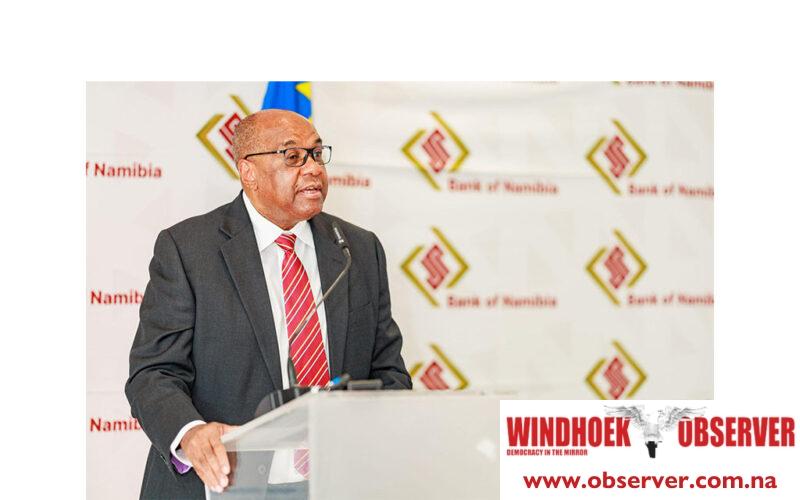Justicia Shipena
The Monetary Policy Committee (MPC) of the Bank of Namibia (BoN) is calling on commercial banks to align their lending margins with those of other countries in the Common Monetary Area (CMA).
According to BoN governor Johannes !Gawaxab, Namibia is currently the only CMA country where the prime lending rate exceeds the repo rate by more than 3.50 percentage points.
In Namibia, the margin remains at 3.75 percentage points.
“This move will address this anomaly and, in time, provide relief to consumers,” said !Gawaxab.
He further stated that banks will receive a specific timeframe to modify their operational models.
The CMA is a regional monetary union that includes Namibia, South Africa, Lesotho, and Eswatini.
It allows for the free movement of capital and a shared currency policy. Namibia maintains a one-to-one peg between the Namibian dollar and the South African rand.
To maintain this peg, interest rate differences between the two countries must be carefully managed to avoid capital outflows and preserve monetary stability.
The MPC made the call as it announced the outcome of its third bi-monthly meeting held on 16 and 17 June 2025.
The committee decided to keep the repo rate unchanged at 6.75%. Commercial banks are expected to maintain the prime lending rate at 10.50%.
!Gawaxab said the decision aims to preserve the currency peg and support domestic economic activity.
He stated that domestic economic growth increased during the first four months of 2025, although it was at a slower pace compared to the same period last year.
The mining, tourism, wholesale and retail trade, transport, and communication sectors supported growth.
The construction, agriculture, and diamond mining sectors remained weak.
Real GDP is projected to grow by 3.8% in 2025, slightly higher than the 3.7% recorded in 2024.
Projections for 2026 stand at 4.0%.
!Gawaxab said risks such as trade tariffs, declining diamond prices, geopolitical tensions, water shortages, disease outbreaks, and slow public spending continue to pose challenges.
Annual inflation averaged 3.6% during the first five months of 2025, down from 4.9% during the same period last year.
The central bank revised inflation forecasts for 2025 and 2026 down to 3.9% and 4.3%.
The revision reflects lower-than-expected price increases and a stronger currency.
!Gawaxab said most central banks have started to lower interest rates.
The European Central Bank and the Bank of England recently cut rates, while the US Federal Reserve and the Bank of Japan held their rates steady.
Most emerging market central banks have also eased, except Brazil, which continued tightening.
“The escalating Middle East conflict and its potential ramifications for global inflation and growth could not be overlooked,” said !Gawaxab.
He said these developments are reducing the monetary policy space available to support economic activity.
The MPC also said keeping the repo rate steady would help reduce the interest rate gap between Namibia and South Africa, adding that it is key to maintaining stable capital flows.
The next MPC meeting will take place on 11 and 12 August 2025.




